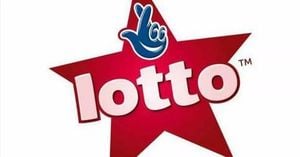Researchers at Balaji Drugs have made promising strides to improve the solubility and dissolution of felodipine (FLD), a widely used antihypertensive medication known for its poor water solubility. By employing self-nanoemulsifying drug delivery systems (SNEDDS), scientists have developed formulations to dramatically increase the drug's available therapeutic effects.
Felodipine belongs to the Biopharmaceutics Classification System (BCS) Class II, which means it is characterized by low solubility and high permeability. With reported water solubility at just 19.7 mg/L, FLD often experiences low oral bioavailability, affecting its clinical outcomes. To address this challenge, the research team explored various lipid-based formulations, focusing on how they can improve drug delivery efficiency by enhancing FLD's solubility.
The SNEDDS technology developed includes the use of multiple ingredients such as oil, surfactants, and co-surfactants. The researchers conducted thorough solubility studies and developed pseudo-ternary phase diagrams to identify the optimal ratios of these components. Their findings indicate the ability of the selected SNEDDS formulations to release over 95% of FLD within just 20 minutes, showcasing their potential for enhancing drug performance.
Preformulation tests revealed cinnamon oil as the most effective oil phase for FLD, significantly improving solubilization. The inclusion of Tween 80 as the surfactant and PEG 400 as the co-surfactant facilitated the effective emulsification needed for developing stable SNEDDS.
One highlight from the research is the use of thermodynamic stability assessments, which gauge how these formulations cope under varying temperature conditions. Results confirmed the stability of FLD-loaded SNEDDS formulations under heat-cool cycles, centrifugation, and freeze-thaw conditions, indicating their robustness and potential for real-world application.
According to the authors of the article, "Self-nanoemulsifying drug delivery systems are effective, smart, and patient-friendly formulation strategies for poorly water-soluble medications." They emphasized the generic applicability of SNEDDS technology across various drugs suffering from low solubility issues.
Support for this assertion stems from comparative dissolution studies where the new SNEDDS formulations outperformed pure FLD. While the conventional formulation demonstrated only 14.78% dissolution over 16 minutes, the optimized SNEDDS systems (F3, F4, F5, and F6 formulations) liberated over 90% of FLD within the same timeframe.
The researchers also analyzed the physicochemical properties of the SNEDDS formulations, such as viscosity, droplet size, and zeta potential. Their observations revealed mean droplet dimensions below the 200 nm threshold, which contributes beneficially to bioavailability through increased absorption surface area.
Emphasizing the importance of their findings, the team suggests the urgency for future investigations to translate their laboratory successes to clinical settings, potentially revolutionizing treatment options for conditions requiring chronic administration of drugs like felodipine.
Through comprehensive testing and formulation optimization, this research paves the way for enhanced oral bioavailability of poorly soluble drugs, enhancing therapeutic efficiency and offering patients improved treatment options.
Future efforts will aim to bring clearly defined advantages of SNEDDS technologies from the bench to bedside, taking advantage of their compatibility with various medications as the pharmaceutical field continues moving forward.



